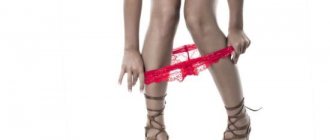Many people forget
Before work, adjust the adjusting screw according to the material of the surface you are going to work with.
If it is hard plywood, strong penetration of the material will be required, therefore, it is worth setting a high force. If it is a loose surface, the force must be reduced so as not to break through the fabric, or for example the PVC panel that you are shooting.
During operation, it is recommended to press the lever with one hand and press the adjusting screw with the thumb of the other hand. Then the recoil will be minimal and the load will be distributed evenly in the stapler. You will be able to nail the brackets much better.
Possible mistakes
There are several of the most common, frequently encountered errors and problems that accompany the operation of a furniture stapler. The tool may fire multiple staples at once, or not at all, and may damage upholstery material. Errors are due to the following reasons:
- incorrect pre-adjustment of the adjusting screw when performing work with traditional mechanical models of the device;
- neglect of the rule of advance marking of places for installing staples, which allows for high-quality and uniform tension of upholstery material;
- lack of fixation of the upholstery with a free hand in order to prevent the material from moving during operation with a stapler.
It is important to control the number of staples inside the “magazine” of the tool, and also be sure to secure the handle with a safety lock immediately after finishing work. This will prevent spontaneous or accidental shooting.
It is strictly forbidden to work with a faulty tool. If necessary, the problem is diagnosed, and the firing pin that has exhausted its life is also periodically replaced.
How to insert staples into the receiver
The design of all mechanical hammers is almost the same. There is a handle-lever, due to which pressing occurs, and at the bottom of the stapler there is a metal plate that opens the receiver. This is where we have to load the staples.
Before you buy brackets at a hardware store, you need to find out what size will fit your device. As a rule, the size and type of suitable staples are indicated on its body.
For example, the body of our stapler indicates a width of 12 mm and a depth of 6-14 mm. This means that you will only be able to charge staples in this range.
Smaller or larger brackets will not fit into the receiver. The size of the staples in millimeters is also indicated on their packaging.
To insert projectiles into the stapler, you need to open the metal plate on the back surface.
To do this, you need to take it with your thumb and forefinger on both sides, then pull it towards you and slightly down. Thus, we press the metal tab on the back surface of the plate, and pull out a metal spring, similar to the one found in a regular office stapler.
If there are any staples left in your stapler, they will fall out once the spring is pulled out. If they are not there, then it’s time to install new ones for further work.
The staples are inserted into the receiver (the hole is in the “P” position). Next, insert the spring back, closing the metal tab. That's all, the tool is loaded and ready to go!
Stapler device
There are three types of tools: pneumatic, electric and manual. For a home workshop, the first one does not apply. The latter is considered the most common. To understand how to change staples in a construction or furniture stapler, let’s look at its structure.
At the bottom of the tool there is a magazine in which a clip of one or another fastener is located. It is supported by a holder with a spring, so the staples and nails, down to the last unit, are in place under the striker. The latter is attached to the striker, which interacts with the spring. The impact force depends on it, the impact of which drives the fastener into the working base.
The design of household models is simple. But for it to function, it is important to select the fasteners correctly. This is justified by the design features of the magazine for the clip.
Types of staples
One of the main parameters that is considered when choosing a bracket is the height of the part immersed in the base. This value ranges from 4 to 14 mm. In addition, the width and thickness of the product are taken into account.
Staple parameters for a construction stapler Source pandaoutdoor.cz
According to these criteria, products are divided into 4 types, which have their own numerical identifier:
- 36. This is a semicircular pattern. Most often used for quick fixation of cable wiring.
- 53. The most common option is U-shaped. The width of such a bracket is 11.4 mm, the thickness of the workpiece is 0.7 mm.
- 140. The products are similar to type 53, only the width here is 10.6 mm and the thickness is 1.2 mm.
- 300. Such products are otherwise called nails. They can only be used for threading into a construction stapler.
Brackets differ not only in their physical design. They can be made from different metals. Thus, ordinary galvanized steel is relevant for working with natural wood of low density. This is a budget solution, but over time it begins to rust. To penetrate hard rock and recycled wood substrates such as plywood or fiberboard, you will need staples made from hardened steel.
In addition to steel samples, there are analogues made of aluminum and copper.
Example of copper staples for a stapler Source ozone.ru
This metal is noticeably soft, which is often the reason why a furniture stapler bends staples. They can only be used with materials that have low density. But copper and aluminum are excellent for use in high humidity conditions.
The third parameter to be considered is the end part of the leg. For its immersion in a soft base, the design of the tip has no practical significance. In the case of hard materials, it is important that the ends are sharpened. Even plastic can be pierced with sharpened steel staples.
See also: Catalog of companies that specialize in completing unfinished houses
What to do if a bracket gets stuck
It is worth noting another very important point that will help you in your work. It happens that the staples become bent and get stuck in the exit hole. They cannot be hammered into the surface and cannot be pulled out by hand.
In this case, we will need to pull out the feed magazine completely.
This option exists for almost all professional staplers.
First you will have to repeat the opening of the metal plate and pull out the spring.
Next, in the middle of the lower part of the stapler you need to find an iron part, slightly protruding from both sides. Grasp it tightly with your thumb and forefinger on both sides and pull down forcefully.
This will remove the entire feed magazine that was in the tool.
You will see a jammed staple that can now be easily pulled out by hand.
Putting the stapler back together is not difficult: the entire pulled out block returns to its place with a press. You should hear a click when you do this. Afterwards, do not forget to replace the spring.
Preparing the tool for work
In our case, a mechanical stapler will be used to attach the foam rubber and upholstery fabric to the bench seat. To do this, you need to choose the right fasteners . Depending on the thickness of the foam rubber, choose brackets that, when fastened, will grip the material itself and the base. It is better to take large ones, 14 - 16 mm in size, so that the material is securely fixed. But remember that the size of the staples should not exceed the maximum allowable for the tool you are working with. Otherwise, you won’t be able to insert them into the magazine, and if you do, there is a high probability that they will get stuck.
The choice of fasteners for nailing upholstery depends on what material you will use:
- For velvet, flock, cotton or linen, you need small staples, 4–6 mm in size (they will not damage the thin fabric and will fix it well).
- For denser materials, such as leather, suede, microfiber , staples measuring 8 - 10 mm are suitable.
Remember that it is better to buy branded consumables . After all, low-quality fasteners can damage the product or cause damage to the tool itself. Original staples will not get stuck in the stapler, will not break or bend, they fit perfectly into the material the first time, so they are used very economically.
Remember your safety! When working with sharp staples and nails, use personal protective equipment . Be sure to wear gloves so that if fasteners accidentally fly out, your hands are protected. Also, this will help prevent your palm from slipping, which is very important when carrying out such painstaking work as upholstery.
Not just parentheses
Some staplers can work not only with staples, but also with studs of various shapes. The designations of what the stapler works with are indicated on its body or in the instructions.
I tuck the nails into the stapler in the same way as with staples, but you need to be careful after pulling out the spring. A row of nails must be loaded along one of the outer edges of the letter “P”, and not inside this very letter!
If you want it to produce two nails side by side when working with a stapler, load the second row along the second outer edge. Next, the spring is inserted and the stapler is closed.
Stapling Types
Not everyone knows that office staplers differ depending on how they fasten sheets.
Most office workers are familiar with the common closed-type stitching options. This type of stationery stapler bends the edges of the staples inward. This is considered the most reliable way to bind paper. It is also the most common. There is also an open type. In this case, the staples are bent outward. This method is preferable to use in cases where only temporary stitching of sheets is necessary. Papers fastened in this way can be easily separated, and the marks are practically invisible. Sometimes in offices they use a special stationery stapler with straight staples. It is necessary in situations where it is necessary to attach paper (some kind of announcement or document) to a special board with a soft surface. It can be made, for example, from cork.
Operation of electrical appliances
Most often, electric staplers for furniture are used for reupholstering interior items and for other large-scale repair work. They differ from mechanical ones by having more massive charges. Their service life is longer. And it’s easier to use electric ones. This furniture stapler costs several times more than mechanical models.
People often ask a question about a furniture stapler. How to choose? There are many options here. Electric staplers differ in the following parameters:
- Number of shots. 20-30 per minute is the standard speed. There are also faster staplers - about 50 beats per minute.
- Source of energy. Units with an electrical cord will not be useful everywhere. The wire may be very short. If there is no access to an outlet, the gun will not work. A type of stapler with a battery is more useful here. But such models are much heavier. You need to pay attention to this if you plan to work long hours.
- A very important point: when purchasing a tool, you need to look at its operating characteristics. How long an electrical appliance can be used without interruption. The fact is that the engine of the device heats up. And the staples clog badly. If this happens, you need to stop the device and wait for it to cool down.
- Safety. It is better if the pistol has protection against accidental shots. The design of the stapler can be constructed in such a way that the staple flies out only when it touches the surface.
- Devices are also distinguished by the presence and absence of different operating modes.
- Price. Directly depends on the manufacturer. If the quality of the pistol is important, then it is better to choose German models.
Additional options
It seems to many that a stationery stapler is a fairly simple device that cannot be improved in any way. But manufacturers are making it more convenient to use. So, when purchasing, pay attention to the fact that there is a plastic footrest or rubberized inserts at the bottom. They will protect your table from scratches.
Another important and convenient addition is the presence of a built-in destapler. This is a special device with which you can quickly straighten the staples. It will come in handy in situations where you need to separate previously fastened sheets. It is inconvenient to pick out staples with scissors, much less with fingernails, and it looks unsightly.
Advantages
The tool has a number of undeniable advantages , regardless of the type of stapler used:
- Reliability and high degree of safety when working with the tool.
- Thanks to the use of a stapler, you can significantly save your energy and time in the process of repairing or reupholstering furniture, as well as when carrying out other specific repair and construction work.
- The convenience is that you can operate the device with only one hand.
- The device, regardless of its type, is easy and simple to use. That is, no special skills are required when working with a stapler.
- All risks associated with the likelihood of mechanical damage to the product to which the device is used are minimized.
- Installation using a stapler takes much less time than when working with nails and a hammer.
- When stitching with a tool, you can use different types of material.
- With proper operation, the device can operate uninterruptedly for a long time.
- Thanks to the powerful impact force, the workpiece always remains in its original form.
- The tool is very multifunctional, since various stapler models can use not only staples, but also nails or screws as consumables.
- Materials for stitching products are not subject to corrosion.
- The tool can be used even in hard-to-reach places.
It should be noted that for household needs you should always choose a mechanical device. It is easy to use and maintain and, importantly, has an affordable price.
Recommendations
If we talk about recommendations, we can name several expert advice.
If the tool does not finish or does not complete the staples, then you will need to tighten the spring a little. Its weakening as you use such a tool is completely normal.
- If a construction stapler bends staples, you can try adjusting the bolt, which is responsible for the tension of the spring. If the situation has not been corrected, then perhaps the selected staples simply do not correspond to the structure of the material for which they are used. Then you can try replacing the consumables with similar ones, but made of hardened steel.
- If nothing comes out of the stapler, or it happens with great difficulty, then, with a high degree of probability, the problem is with the striker. Most likely, it is simply rounded and needs to be sharpened a little.
If it is clearly visible that the mechanism is fully working, and the staples are not fired, then, most likely, the firing pin has simply worn out, which is why it cannot capture the staple. In this case, you can file the firing pin and turn the damper on the other side.
Watch the video to see how to insert staples into a stapler.
Important nuances
When purchasing a paper stapler, it is important to consider how actively you will use it. If you plan to use it often, then pay attention to metal options. They are considered more reliable and will last longer. In other cases, ordinary plastic devices will do.
Their operating principle is absolutely the same. It is also important to take into account that staplers differ in power. This indicator determines how many sheets your device can fasten at a time. By the way, it is also important to choose the right staples for a stationery stapler. It is advisable to know not only their size, but also the manufacturer.
Description and rules for growing black currant variety Veloy
In addition, you need to know that there are devices that only work when resting on a table or other flat surface. If you try to fasten papers by weight with such a stapler, the staples will fall out or become deformed.











